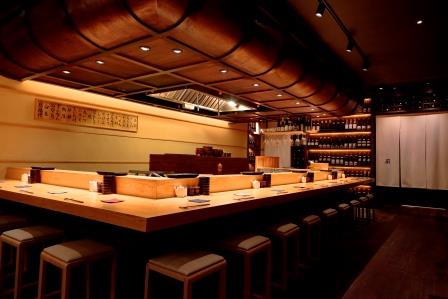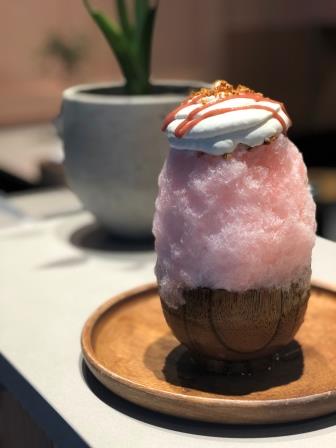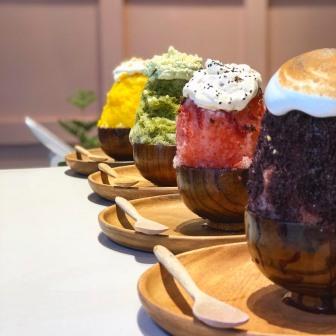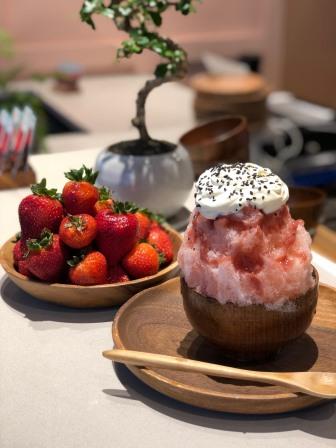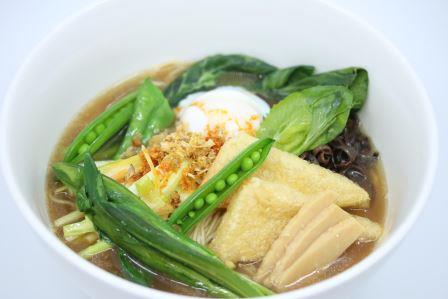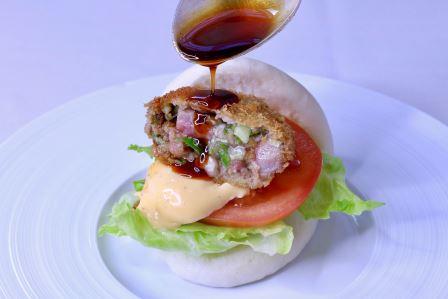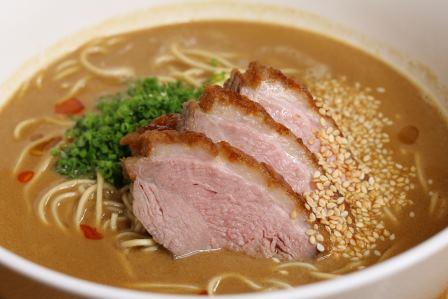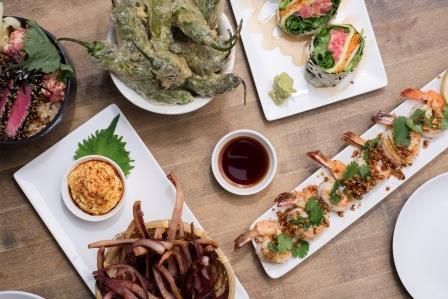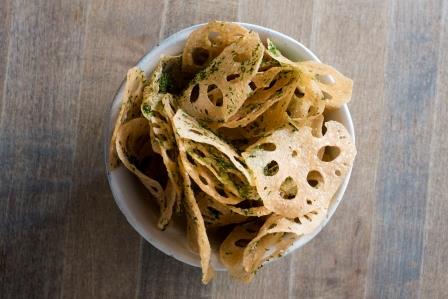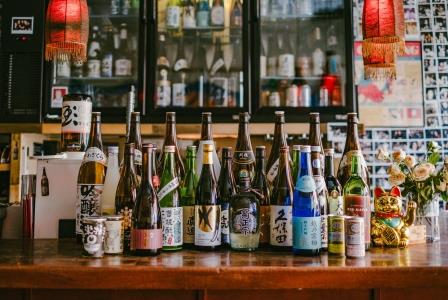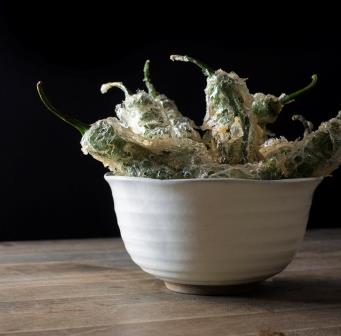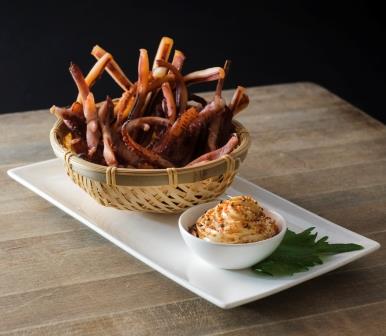A desire to create fans of Japan by spreading Yakitori to the world
By Aya Ota
Only after a year since they opened “MIFUNE New York” and “sushi AMANE” at the same time in the Midtown East area, Tokyo Restaurants Factory Inc. opened Toriko NY, the third Yakitori specialty restaurant, in the West Village District in late August of 2018, and is attracting a lot of attention.
“I already anticipate a huge potential,” says Hiroyuki Morishima, General Manager of the Overseas Business Division of the company. The “Toriko” is a successful business model among the high-end Japanese restaurant chains in Japan developed by Tokyo Restaurants Factory Inc. Its concept, “to enjoy Yakitori, which used to be inexpensive casual food culture, in a stylish and sophisticated ambience with wine”, caught on. Since the opening of its first restaurant in 2011, this chain has been growing steadily, and there are 15 of them in Tokyo and Osaka combined. They were sure that this “Toriko” concept would be well received in the dining scene of New York as well from the very beginning of the company’s plan to go to New York, and had been working on its realization. In the preparation of its opening, the experience and knowledge with the opening of “MIFUNE” somewhat helped them in terms of construction, certificates application, hiring etc., but they still experienced many difficulties in developing a completely different type of business model in a completely different geographical condition. As part of their marketing efforts, they started early by hiring a PR company in order to collect customers, so many people visit by seeing the media advertisement; however, the presence and the ambience of the restaurants are also attracting people’s eyes, and drawing neighboring people to the restaurant as well. By word of mouth, they already started gathering regular customers.
“The chicken meat we get here is totally different from what we get in Japan, so we repeated trial and error a lot for the whole processes of preparations, grilling, and spices in order to achieve Japan quality,” says Shinji Odahara, the Culinary Director. He is the executive chef, who manages the whole group, and was called in for the opening of this New York location. He tried so many different kinds of chicken meat, checking the quality by touching and cooking, and settled with the “Bobo Chickens” which are raised freely out of cages in the northern New York State. One selling point of the restaurant is serving of rare parts such as Seseri-Neck, Yagen-Soft Bone, and Bonjiri-Tail, and each part is prepared and grilled with matching delicacy and particularity to complete. By utilizing multiple different sauces and salts exquisitely, best possible tastes are being brought out.
Presently, they offer only 2 menu items for the dining room, “Omakase Course” ($85), and “Toriko Course” ($72). The Omakase Course starts with the “Seasonal Amuse Bouche, 4 kinds”, and followed by the “Chicken-Bone Soup”, and the “Foie Gras Chawanmushi”. After cleaning your pellet with the “House-made Rice Bran Pickled Vegetable/Grated Daikon”, the main Yakitori dish finally comes with 5 chicken skewers, 2 vegetable skewers, tsukune, and wagyu”. To end the course, you get either rice or noodle dish: shio ramen or oyako don. A dessert is also served in this gorgeous course. At the bar, you can order a-la-carte menu items. In order to accommodate some Americans’ requests, they have gluten-free sauce and a vegan menu. They also handle customers who do not care for internal organ parts flexibly. At the Toriko restaurants in Japan, majority of people enjoy Yakitori with wine, but here, at the New York location, the ratio of wine and sake sales is half and half.
“I am certain that Yakitori will be as well accepted as sushi in the US,” says Morishima. “To create fans of Japan” is a mission of Tokyo Restaurants Factory Inc. It may not be too long before you see “Toriko” all over the US.
焼き鳥を世界へ広め、日本のファンを作りたい
ミッドタウン・イーストに『MIFUNE New York』『sushi AMANE』を同時開店してからわずか1年―。東京レストランツファクトリー株式会社が、3店舗目となる焼き鳥専門店『鳥幸ニューヨーク』を2018年8月末、ウェストヴィレッジ地区に開店し、注目が集まっている。
「早くも大きな手応えを感じている」と語るのは、同社海外事業部責任者を務める森嶋博之氏。『鳥幸』は、東京レストランツファクトリーが日本国内で展開する高級和食店の中で成功している業態で、“かつては大衆的な食文化だった焼き鳥を、お洒落な雰囲気でワインと共に楽しむ”というコンセプトがヒットした。
2011年に1店舗目を開店以来、着実に店舗を増やし、現在は東京と大阪で15 店舗展開している。同社がニューヨーク進出を検討していた当初から、『鳥幸』はニューヨークのダイニング・シーンに受け入れられるという確信があり、計画を進めてきたという。開店準備に当たっては、工事、許認可申請、人材採用などの面では、『MIFUNE』での経験や知見に助けられたこともあったが、やはり、全く異なる立地条件で全く異なる業態の展開には苦労も多かったという。集客・マーケティングは、PR会社に依頼して早い段階からメディアに掲載されたことで、メディアを見て来る客が多いが、店の存在や雰囲気自体も人目を引き、近所に住む客も多く訪れる。すでに人が人を呼び、早くも常連客が着いてきたそうだ。
「鶏肉自体が全く異なるので、日本と同じクオリティに仕上げるまで、仕込み、焼き方、調味に至るまで、全ての行程で試行錯誤を繰り返した」と語るのは総料理長を務める尾田原真二。尾田原氏は同社グループ全体を統括する総料理長で『鳥幸ニューヨーク』開店のために呼び寄せた。数多くの鶏肉を仕入れ、すべて手で触って肉質を確かめ試作を繰り返し、ニューヨーク州北部で放し飼いで飼育されているボーボーチキンを採用した。同店では、せせり、やげん、ぼんじりといった稀少部位を味わえるのも魅力のひとつだが、仕込みから焼き方まで、それぞれの部位に合わせた繊細なこだわりで創り上げる。複数のタレと塩を絶妙に使い分け、美味しさを存分に引き出している。
メニューは、現在ダイニングルームでは「おまかせコース」($85)と「鳥幸コース」($72)のみ。
のみ。おまかせコースは、まずは季節の前菜4点盛りに始まり、白湯スープ、フォアグラ茶碗蒸しと続く。ぬか漬け・大根おろしで、口直しをした後に、いよいよメインの焼き鳥(鶏串5本、野菜串2本、つくね、和牛)へ。最後は、鳥幸塩ラーメンまたは親子丼でしめ、さらには甘味も登場するという、なんとも贅沢な内容だ。バー・スペースでは、アラカルトでも注文することができる。米国人客のリクエストに合わせ、グルテンフリーのタレやヴィーガン・メニューも用意。中には内臓が苦手な客もいるため、柔軟に対応している。日本の『鳥幸』ではワインと合わせて楽しむ客が多いが、ニューヨーク店ではワインと日本酒は約半々の売上だ。
「アメリカで焼き鳥は寿司と同じくらい受け入れられると確信している」と森嶋氏。「日本のファンを作りたい」というミッションを掲げる東京レストランツファクトリー。『鳥幸』が全米各地で見られる日もそう遠くないかもしれない。
Toriko
76 Carmine Street
New York, NY 10014
Tel: 646-596-8198
Dinner : Mon – Sat 5:00pm – 11:30pm
(Last Order 10:30pm)
Only after a year since they opened “MIFUNE New York” and “sushi AMANE” at the same time in the Midtown East area, Tokyo Restaurants Factory Inc. opened Toriko NY, the third Yakitori specialty restaurant, in the West Village District in late August of 2018, and is attracting a lot of attention.
“I already anticipate a huge potential,” says Hiroyuki Morishima, General Manager of the Overseas Business Division of the company. The “Toriko” is a successful business model among the high-end Japanese restaurant chains in Japan developed by Tokyo Restaurants Factory Inc. Its concept, “to enjoy Yakitori, which used to be inexpensive casual food culture, in a stylish and sophisticated ambience with wine”, caught on. Since the opening of its first restaurant in 2011, this chain has been growing steadily, and there are 15 of them in Tokyo and Osaka combined. They were sure that this “Toriko” concept would be well received in the dining scene of New York as well from the very beginning of the company’s plan to go to New York, and had been working on its realization. In the preparation of its opening, the experience and knowledge with the opening of “MIFUNE” somewhat helped them in terms of construction, certificates application, hiring etc., but they still experienced many difficulties in developing a completely different type of business model in a completely different geographical condition. As part of their marketing efforts, they started early by hiring a PR company in order to collect customers, so many people visit by seeing the media advertisement; however, the presence and the ambience of the restaurants are also attracting people’s eyes, and drawing neighboring people to the restaurant as well. By word of mouth, they already started gathering regular customers.
“The chicken meat we get here is totally different from what we get in Japan, so we repeated trial and error a lot for the whole processes of preparations, grilling, and spices in order to achieve Japan quality,” says Shinji Odahara, the Culinary Director. He is the executive chef, who manages the whole group, and was called in for the opening of this New York location. He tried so many different kinds of chicken meat, checking the quality by touching and cooking, and settled with the “Bobo Chickens” which are raised freely out of cages in the northern New York State. One selling point of the restaurant is serving of rare parts such as Seseri-Neck, Yagen-Soft Bone, and Bonjiri-Tail, and each part is prepared and grilled with matching delicacy and particularity to complete. By utilizing multiple different sauces and salts exquisitely, best possible tastes are being brought out.
Presently, they offer only 2 menu items for the dining room, “Omakase Course” ($85), and “Toriko Course” ($72). The Omakase Course starts with the “Seasonal Amuse Bouche, 4 kinds”, and followed by the “Chicken-Bone Soup”, and the “Foie Gras Chawanmushi”. After cleaning your pellet with the “House-made Rice Bran Pickled Vegetable/Grated Daikon”, the main Yakitori dish finally comes with 5 chicken skewers, 2 vegetable skewers, tsukune, and wagyu”. To end the course, you get either rice or noodle dish: shio ramen or oyako don. A dessert is also served in this gorgeous course. At the bar, you can order a-la-carte menu items. In order to accommodate some Americans’ requests, they have gluten-free sauce and a vegan menu. They also handle customers who do not care for internal organ parts flexibly. At the Toriko restaurants in Japan, majority of people enjoy Yakitori with wine, but here, at the New York location, the ratio of wine and sake sales is half and half.
“I am certain that Yakitori will be as well accepted as sushi in the US,” says Morishima. “To create fans of Japan” is a mission of Tokyo Restaurants Factory Inc. It may not be too long before you see “Toriko” all over the US.
焼き鳥を世界へ広め、日本のファンを作りたい
ミッドタウン・イーストに『MIFUNE New York』『sushi AMANE』を同時開店してからわずか1年―。東京レストランツファクトリー株式会社が、3店舗目となる焼き鳥専門店『鳥幸ニューヨーク』を2018年8月末、ウェストヴィレッジ地区に開店し、注目が集まっている。
「早くも大きな手応えを感じている」と語るのは、同社海外事業部責任者を務める森嶋博之氏。『鳥幸』は、東京レストランツファクトリーが日本国内で展開する高級和食店の中で成功している業態で、“かつては大衆的な食文化だった焼き鳥を、お洒落な雰囲気でワインと共に楽しむ”というコンセプトがヒットした。
2011年に1店舗目を開店以来、着実に店舗を増やし、現在は東京と大阪で15 店舗展開している。同社がニューヨーク進出を検討していた当初から、『鳥幸』はニューヨークのダイニング・シーンに受け入れられるという確信があり、計画を進めてきたという。開店準備に当たっては、工事、許認可申請、人材採用などの面では、『MIFUNE』での経験や知見に助けられたこともあったが、やはり、全く異なる立地条件で全く異なる業態の展開には苦労も多かったという。集客・マーケティングは、PR会社に依頼して早い段階からメディアに掲載されたことで、メディアを見て来る客が多いが、店の存在や雰囲気自体も人目を引き、近所に住む客も多く訪れる。すでに人が人を呼び、早くも常連客が着いてきたそうだ。
「鶏肉自体が全く異なるので、日本と同じクオリティに仕上げるまで、仕込み、焼き方、調味に至るまで、全ての行程で試行錯誤を繰り返した」と語るのは総料理長を務める尾田原真二。尾田原氏は同社グループ全体を統括する総料理長で『鳥幸ニューヨーク』開店のために呼び寄せた。数多くの鶏肉を仕入れ、すべて手で触って肉質を確かめ試作を繰り返し、ニューヨーク州北部で放し飼いで飼育されているボーボーチキンを採用した。同店では、せせり、やげん、ぼんじりといった稀少部位を味わえるのも魅力のひとつだが、仕込みから焼き方まで、それぞれの部位に合わせた繊細なこだわりで創り上げる。複数のタレと塩を絶妙に使い分け、美味しさを存分に引き出している。
メニューは、現在ダイニングルームでは「おまかせコース」($85)と「鳥幸コース」($72)のみ。
のみ。おまかせコースは、まずは季節の前菜4点盛りに始まり、白湯スープ、フォアグラ茶碗蒸しと続く。ぬか漬け・大根おろしで、口直しをした後に、いよいよメインの焼き鳥(鶏串5本、野菜串2本、つくね、和牛)へ。最後は、鳥幸塩ラーメンまたは親子丼でしめ、さらには甘味も登場するという、なんとも贅沢な内容だ。バー・スペースでは、アラカルトでも注文することができる。米国人客のリクエストに合わせ、グルテンフリーのタレやヴィーガン・メニューも用意。中には内臓が苦手な客もいるため、柔軟に対応している。日本の『鳥幸』ではワインと合わせて楽しむ客が多いが、ニューヨーク店ではワインと日本酒は約半々の売上だ。
「アメリカで焼き鳥は寿司と同じくらい受け入れられると確信している」と森嶋氏。「日本のファンを作りたい」というミッションを掲げる東京レストランツファクトリー。『鳥幸』が全米各地で見られる日もそう遠くないかもしれない。
Toriko
76 Carmine Street
New York, NY 10014
Tel: 646-596-8198
Dinner : Mon – Sat 5:00pm – 11:30pm
(Last Order 10:30pm)





